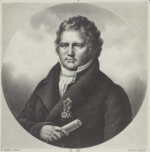How to Pronounce William-Louis Ternaux
#50
Most Popular
Boost
Oct 08, 1763 Sedan, Grand Est, France Died on 02 Apr 1833 (aged 69)
French politician
LibraWilliam Louis Ternaux, Date of Birth, Place of Birth, Family, Facts, Age, Net Worth, Biography and More in FamedBorn.com

French politician
Libra